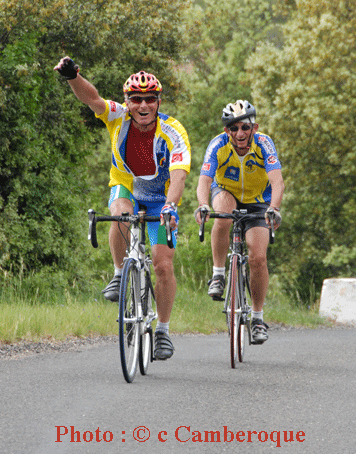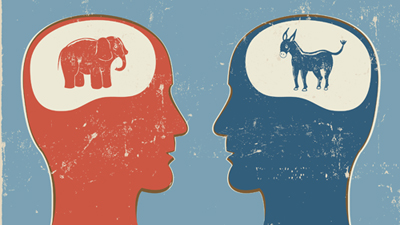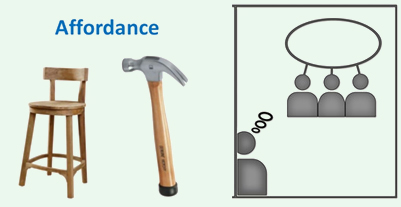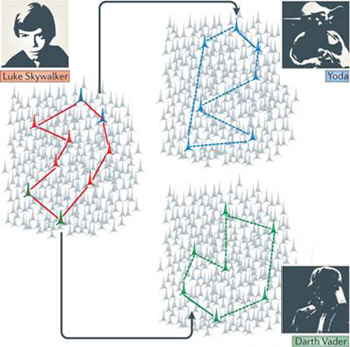Tuesday, 11 December 2018
Pedal Your Way To Healthy Aging!

The evidence of the benefits of physical activity for both the body and the brain continues to pile up. A study published by Pollock et al. in April 2018 dealt with a group of 125 male and female cyclists ages 55 to 79, a stage of life when normally our muscle fibres becomes less vascularized and our immune systems decline. But Pollock found that some of his subjects, at age 75, had the immune profiles of 20-year-olds!
As described in a summary of this study published in the French newspaper Le Monde, these cyclists (two-thirds of whom were men) had all been cycling for many years, still cycled 2.5 hours per week (at moderate but constant intensity) and could cycle 100 kilometres in 6.5 hours. (more…)
Body Movement and the Brain | No comments
Thursday, 29 November 2018
A Pickpocket Teaches the Science of Attention
 When I give courses on the brain’s “higher functions”, and I get to the topic of attention and control, I often show videos of Apollo Robbins, a professional pickpocket whom many consider the best in the world. The video I show most often was produced by Scientific American and is entitled “Neuroscience Meets Magic”. It shows neuroscientists who specialize in the subject of attention analyzing his subtlest gestures and identifying the classic principles of attention that he is manipulating, such as bottom up, top down, frame of attention, and misdirection. (more…)
When I give courses on the brain’s “higher functions”, and I get to the topic of attention and control, I often show videos of Apollo Robbins, a professional pickpocket whom many consider the best in the world. The video I show most often was produced by Scientific American and is entitled “Neuroscience Meets Magic”. It shows neuroscientists who specialize in the subject of attention analyzing his subtlest gestures and identifying the classic principles of attention that he is manipulating, such as bottom up, top down, frame of attention, and misdirection. (more…)
The Emergence of Consciousness | No comments
Wednesday, 14 November 2018
Political Allegiance and Brain Biology
 How hard it is to get someone to shift their allegiance from one political party to another is something that many of us know from personal experience, but it has also been demonstrated experimentally. For example, in subjects who were exposed to political ideas opposed to their own, researchers have recorded brain activity similar to that associated with the processing of pain or negative emotions. Conversely, when subjects were asked to justify their own political positions, their ventral striatum became more active, the typical sign of a pleasant, positive experience—in short, a reward.
How hard it is to get someone to shift their allegiance from one political party to another is something that many of us know from personal experience, but it has also been demonstrated experimentally. For example, in subjects who were exposed to political ideas opposed to their own, researchers have recorded brain activity similar to that associated with the processing of pain or negative emotions. Conversely, when subjects were asked to justify their own political positions, their ventral striatum became more active, the typical sign of a pleasant, positive experience—in short, a reward.
So does this mean that all of us are stuck in a self-referential loop that would significantly compromise the possibility of any genuine political debate? (more…)
Emotions and the Brain | No comments
Thursday, 1 November 2018
How the Concept of Affordances Has Evolved

Recently, I had the chance to realize how quickly a concept can change—in this case, the concept of affordances, In its original form, this concept first appeared in studies by James J. Gibson on the sense of sight, in the 1970s. In short, Gibson observed that when we see an object, what interests us the most is not so much its physical properties as the opportunities that it affords us to take action—to intervene more effectively in the world and thus better resist the ravages of time, or, in the elegant language of physics, to temporarily overcome the second law of thermodynamics, that entropy always increases.
For some years, this concept of affordances received little attention in cognitive science, because the prevailing highly computationalist paradigm, emphasizing inputs, manipulation of symbols, and outputs, militated against its full development. This is a common phenomenon in the history of ideas: a conceptual innovation that is just a bit ahead of its time does not fit into any existing, broader paradigm that would let the scientific community understand and embrace its full implications. (more…)
Body Movement and the Brain | No comments
Wednesday, 10 October 2018
The Neuronal Traces of Our Conceptual Memories

Much has been written on the question of how our memories are physically represented in our brains. In this post, I discuss two answers that have been competing with each other, so to speak, for a number of years. In very general terms, according to one of these answers, our memories are distributed across vast populations of neurons, numbering in the millions (out of the roughly 16 billion neurons in the cortex as a whole). According to the other answer, these memories are instead recorded in much smaller, sparser populations of neurons, in particular in the hippocampus, which is a very old part of the cortex in evolutionary terms and is highly involved in memory.
In recent years, the latter, “sparse” conception of memory, in which at most a few thousand neurons are activated by any given memory, seems to be gaining the upper hand, or at least that is what I gather from two recent articles touting its merits. (more…)
Memory and the Brain | No comments







